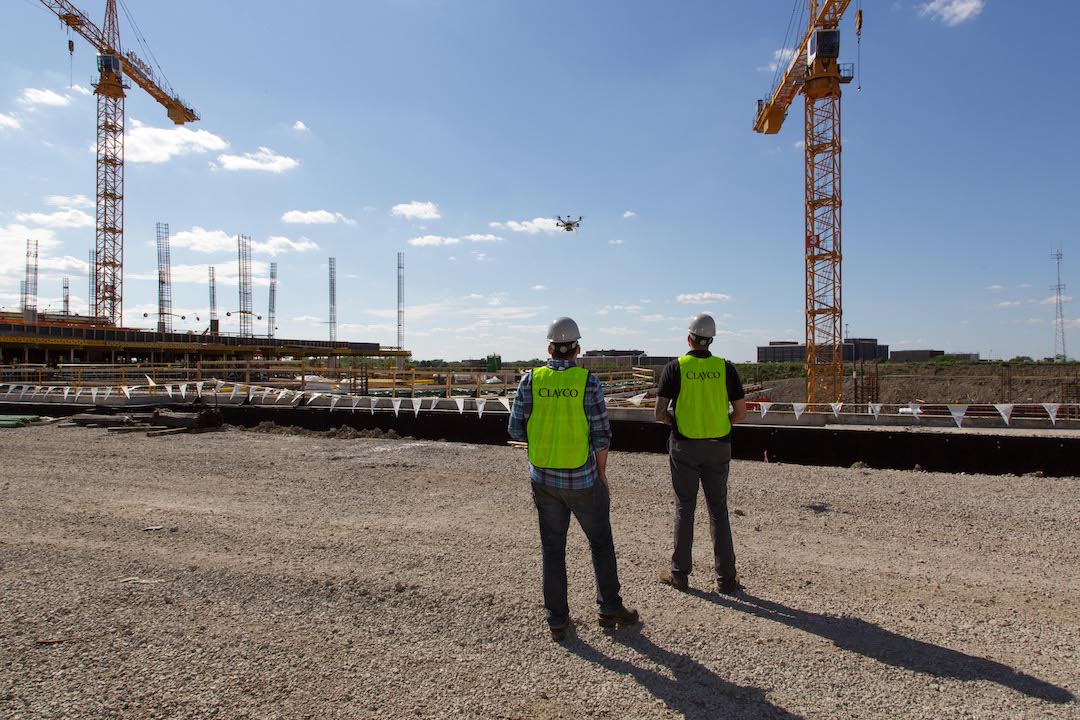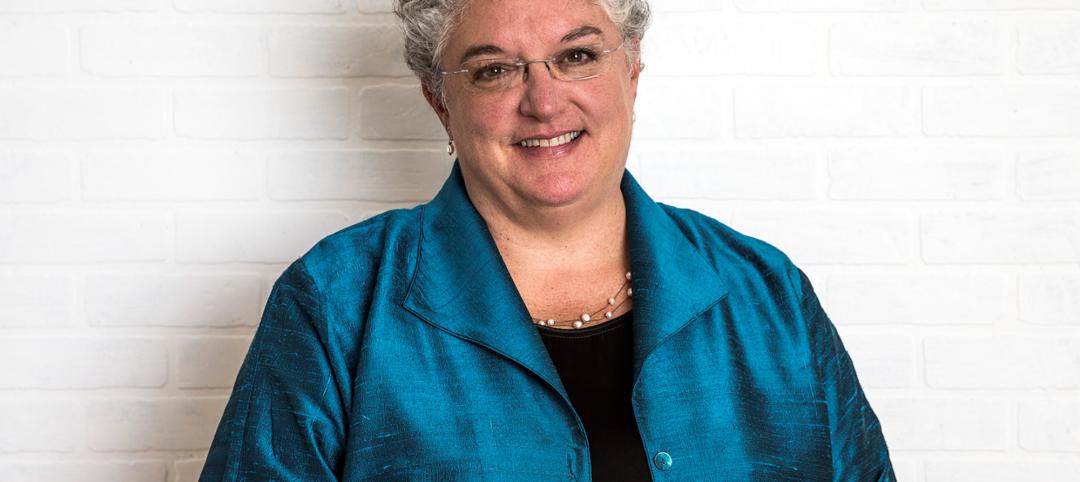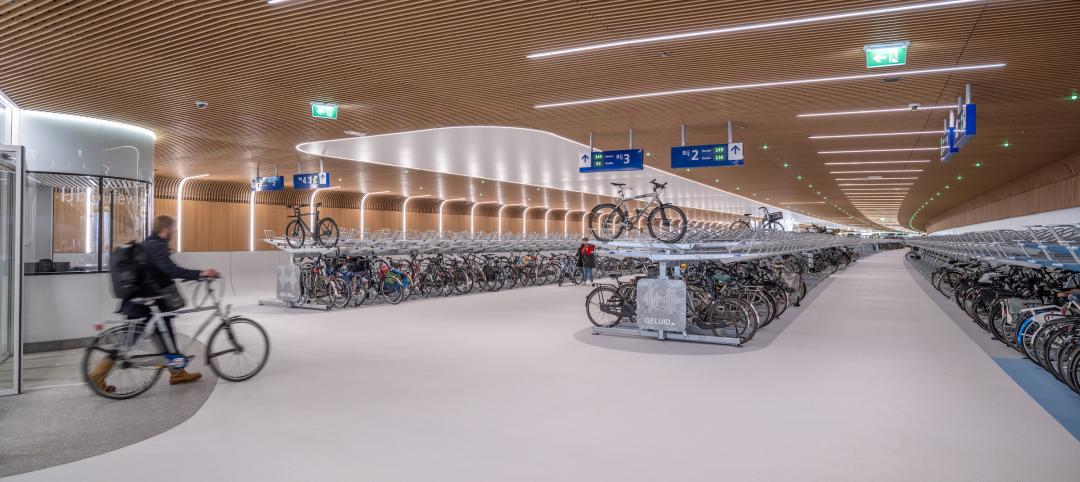Clayco’s CEO and Chairman Bob Clark sees innovation as being at the center of what his firm does. It was one of the first GCs to use full-room computers, an IBM 3600 “that looked like a giant refrigerator,” he recalls. It was an early adopter of spreadsheet technology, using Prolog’s project management software.
In 2005, it started a full-service concrete subcontracting business that now has 1,000 employees and produces four million sf of concrete walls per year. Clayco was the first construction company to receive an FAA license to fly small unmanned aerial vehicles. In 2015, it launched Uplift Data Partners, a turnkey construction and real estate inspection service that uses drones. (It sold that business to PrecisionHawk.)
Clayco’s interest in drones led it to start Treehouse Adventures, a venture-capital entity that focuses on construction. Its investments include Ventana, a high-performance curtain wall fabricator and installer; and Drawn, a design group.
In 1993, Clayco formed its Mission Control team to bring project management out into the field. Mission Control started with a dozen people and now has one team member for every three project managers in the field. And the company’s “paradigm shift toward greater jobsite safety,” says Clark, got it involved recently in hard hat design with the Savannah (Ga.) College of Arts and Design.
 Its embrace of prefabrication allowed Clayco to build a bridge across a street in Missouri in a single day. Photo courtesy Clayco
Its embrace of prefabrication allowed Clayco to build a bridge across a street in Missouri in a single day. Photo courtesy Clayco
In June, the company combined its design businesses, Lamar Johnson Collaborative and BatesForum, providing Clayco with an integrated delivery model that Clark believes will “set a new standard.” Clark is looking ahead to see where else technology and better project management might give Clayco an edge.
He believes that modular construction will be required “on a mass scale” to counteract the industry’s aging workforce. Within three to seven years he expects robots to be doing more installation work.
ALSO SEE: Oracle’s replica of a construction jobsite creates an immersive environment for AEC professionals
Clark is a big proponent of BIM modeling and prefabrication. Last October, Clayco installed a bridge across a street in Clayton, Mo., in a single day by constructing the bridge’s steel-and-concrete components offsite. That delivery method saved local residents and businesses five months of impact on traffic.
For Pfizer’s 294,000-sf facility in Chesterfield, Mo., Clayco prefabricated the equivalent of two miles of lab walls, with conduit and pipe embedded.
Clark is also excited about artificial intelligence, albeit from a unique perspective of talent management to help employees map their careers and retirements. “We’re looking to build a talent management organization faster.”
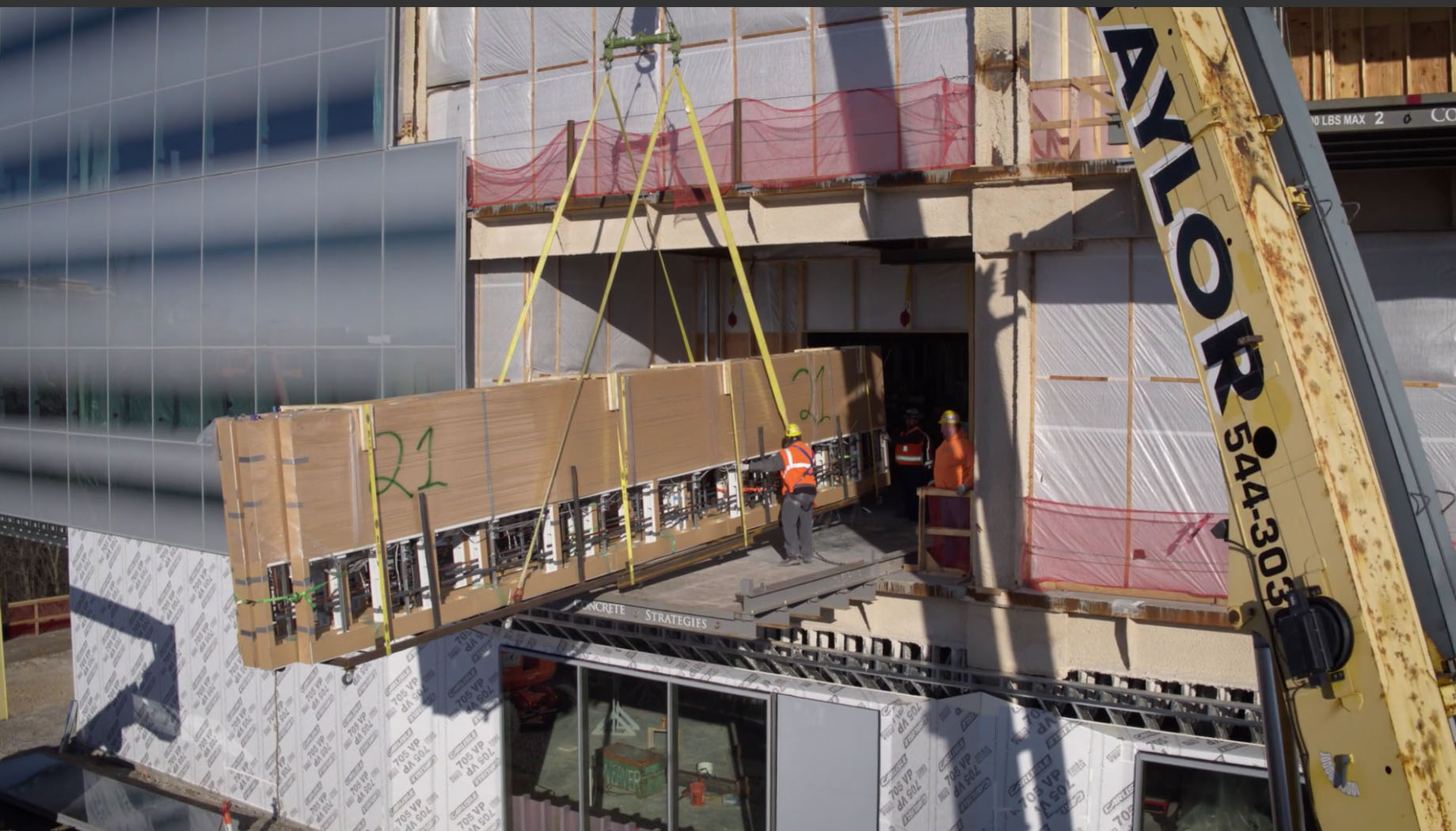
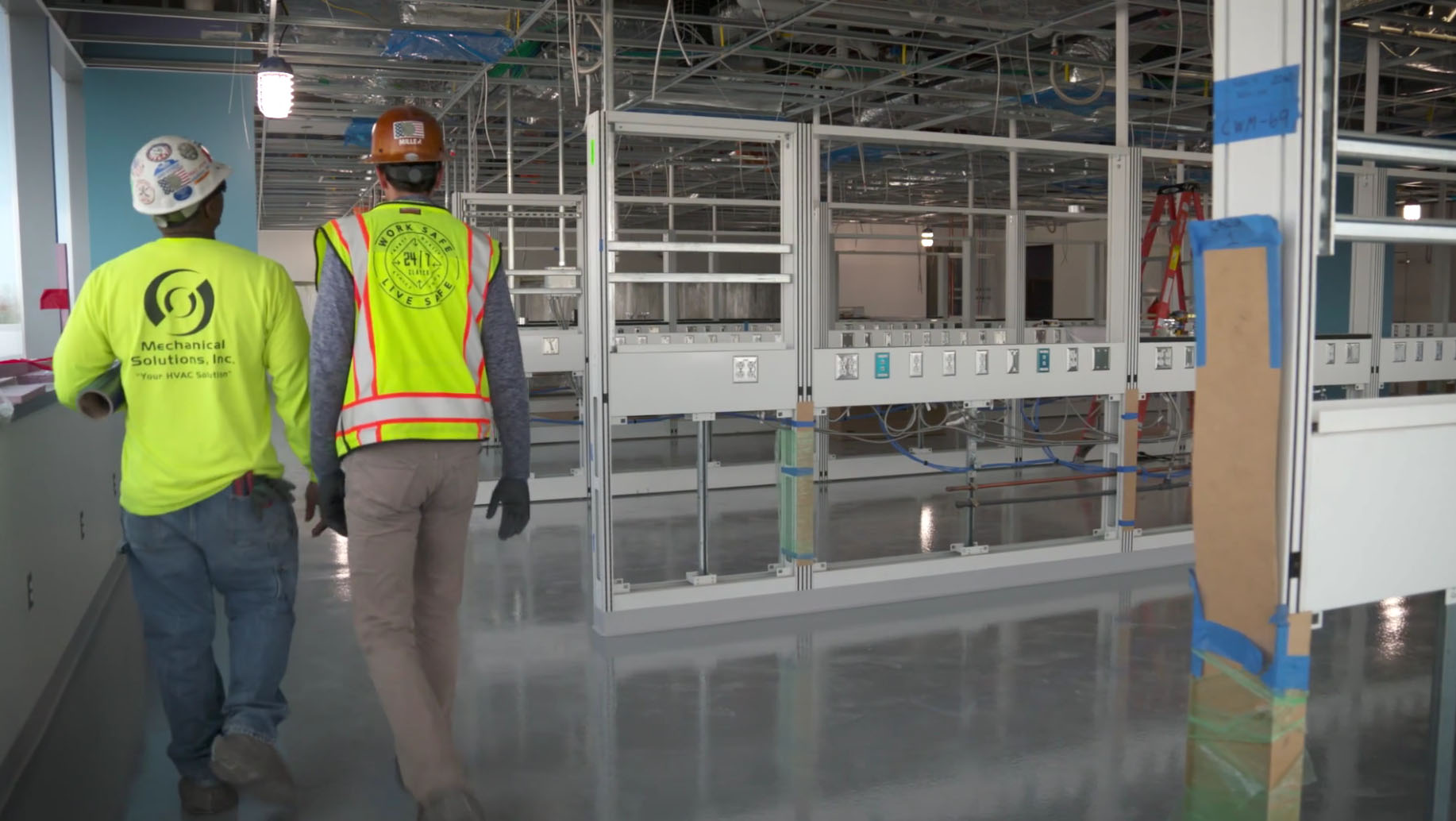
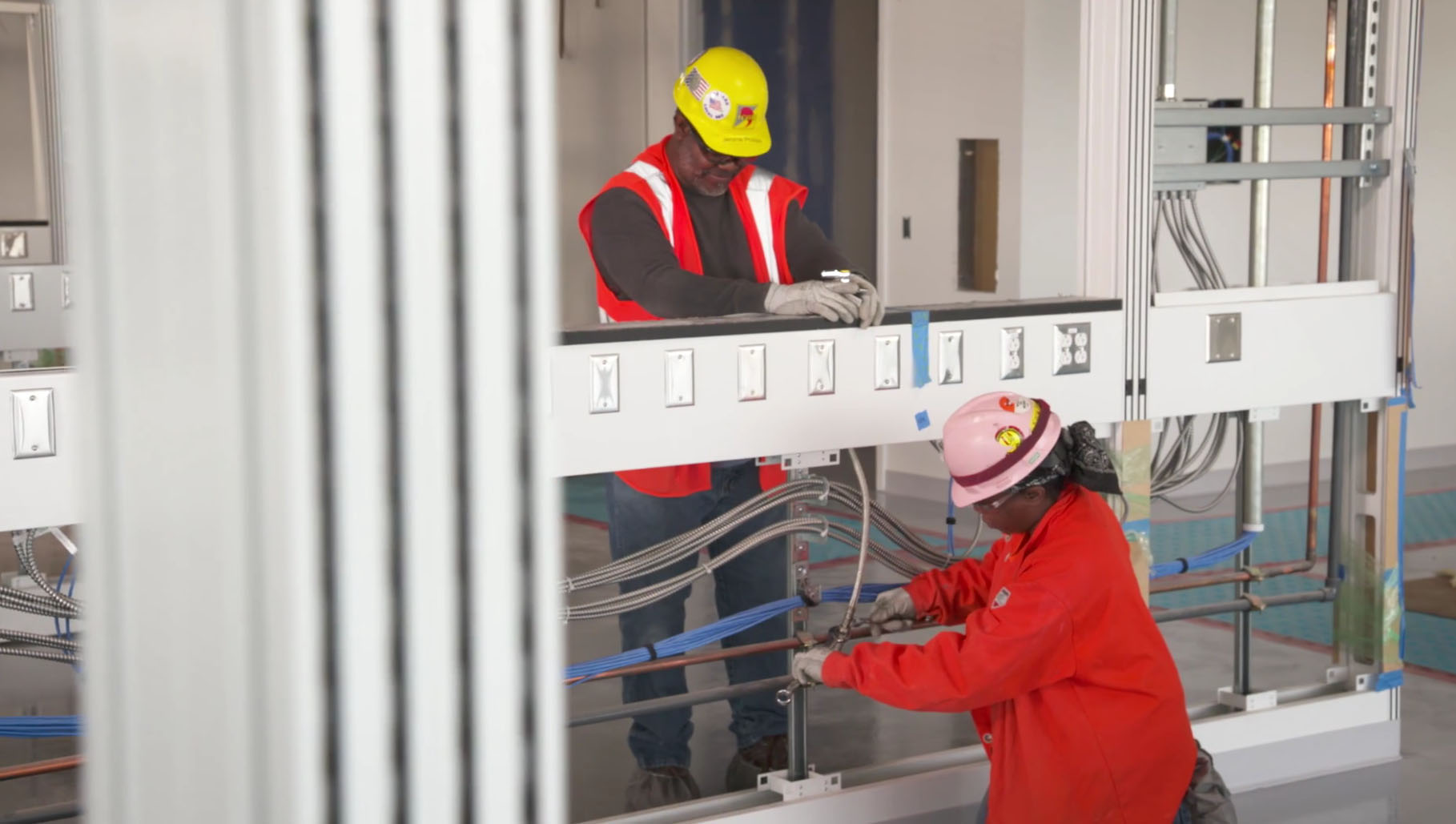 For Pfizer’s 294,000-sf facility in Chesterfield, Mo., Clayco prefabricated the equivalent of two miles of lab walls, with conduit and pipe embedded. Photo courtesy Clayco
For Pfizer’s 294,000-sf facility in Chesterfield, Mo., Clayco prefabricated the equivalent of two miles of lab walls, with conduit and pipe embedded. Photo courtesy Clayco
Related Stories
3D Printing | Apr 11, 2023
University of Michigan’s DART Laboratory unveils Shell Wall—a concrete wall that’s lightweight and freeform 3D printed
The University of Michigan’s DART Laboratory has unveiled a new product called Shell Wall—which the organization describes as the first lightweight, freeform 3D printed and structurally reinforced concrete wall. The innovative product leverages DART Laboratory’s research and development on the use of 3D-printing technology to build structures that require less concrete.
Smart Buildings | Apr 7, 2023
Carnegie Mellon University's research on advanced building sensors provokes heated controversy
A research project to test next-generation building sensors at Carnegie Mellon University provoked intense debate over the privacy implications of widespread deployment of the devices in a new 90,000-sf building. The light-switch-size devices, capable of measuring 12 types of data including motion and sound, were mounted in more than 300 locations throughout the building.
Architects | Apr 6, 2023
New tool from Perkins&Will will make public health data more accessible to designers and architects
Called PRECEDE, the dashboard is an open-source tool developed by Perkins&Will that draws on federal data to identify and assess community health priorities within the U.S. by location. The firm was recently awarded a $30,000 ASID Foundation Grant to enhance the tool.
Cladding and Facade Systems | Apr 5, 2023
Façade innovation: University of Stuttgart tests a ‘saturated building skin’ for lessening heat islands
HydroSKIN is a façade made with textiles that stores rainwater and uses it later to cool hot building exteriors. The façade innovation consists of an external, multilayered 3D textile that acts as a water collector and evaporator.
Women in Design+Construction | Apr 5, 2023
Carole Wedge, former Shepley Bulfinch President and CEO, retires after 37 years
Wedge’s 37-year career at Shepley Bulfinch evolved a historic firm into a national design practice.
AEC Innovators | Mar 27, 2023
Leading architecture, engineering firm HED appoints new co-CEOs
As children of immigrant families, Van Herle and Suarez will bring a diverse perspective into a historically underrepresented industry and advance the firm’s mission of creating a positive impact for clients, communities, and the world.
Transportation & Parking Facilities | Mar 23, 2023
Amsterdam debuts underwater bicycle parking facility that can accommodate over 4,000 bikes
In February, Amsterdam saw the opening of a new underwater bicycle parking facility. Located in the heart of the city—next to Amsterdam Central Station and under the river IJ (Amsterdam’s waterfront)—the facility, dubbed IJboulevard, has parking spots for over 4,000 bicycles, freeing up space on the street.
Building Tech | Mar 14, 2023
Reaping the benefits of offsite construction, with ICC's Ryan Colker
Ryan Colker, VP of Innovation at the International Code Council, discusses how municipal regulations and inspections are keeping up with the expansion of off-site manufacturing for commercial construction. Colker speaks with BD+C's John Caulfield.
AEC Innovators | Mar 3, 2023
Meet BD+C's 2023 AEC Innovators
More than ever, AEC firms and their suppliers are wedding innovation with corporate responsibility. How they are addressing climate change usually gets the headlines. But as the following articles in our AEC Innovators package chronicle, companies are attempting to make an impact as well on the integrity of their supply chains, the reduction of construction waste, and answering calls for more affordable housing and homeless shelters. As often as not, these companies are partnering with municipalities and nonprofit interest groups to help guide their production.
Modular Building | Mar 3, 2023
Pallet Shelter is fighting homelessness, one person and modular pod at a time
Everett, Wash.-based Pallet Inc. helped the City of Burlington, Vt., turn a municipal parking lot into an emergency shelter community, complete with 30 modular “sleeping cabins” for the homeless.


